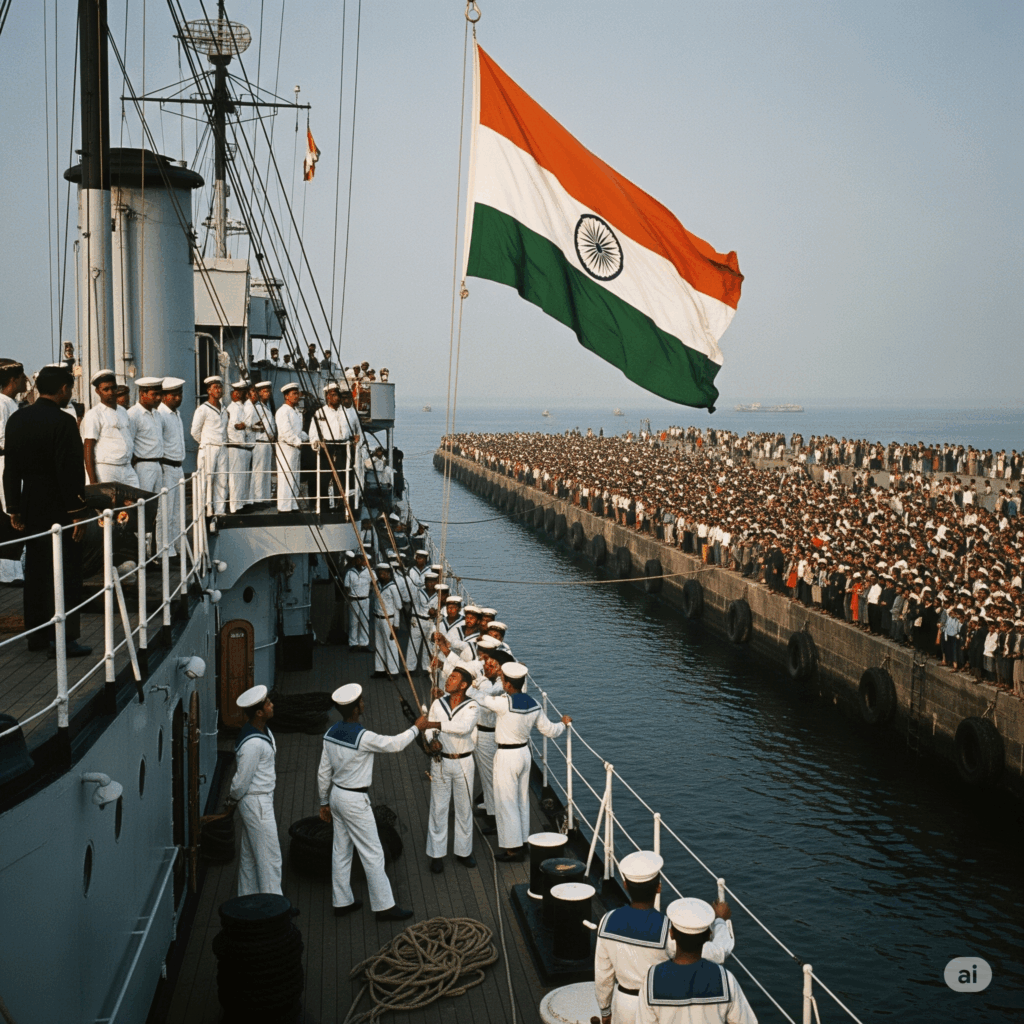- He aimed to divide the Indian army along religious lines, a decision that would have far-reaching and tragic consequences for the unity of the armed forces.
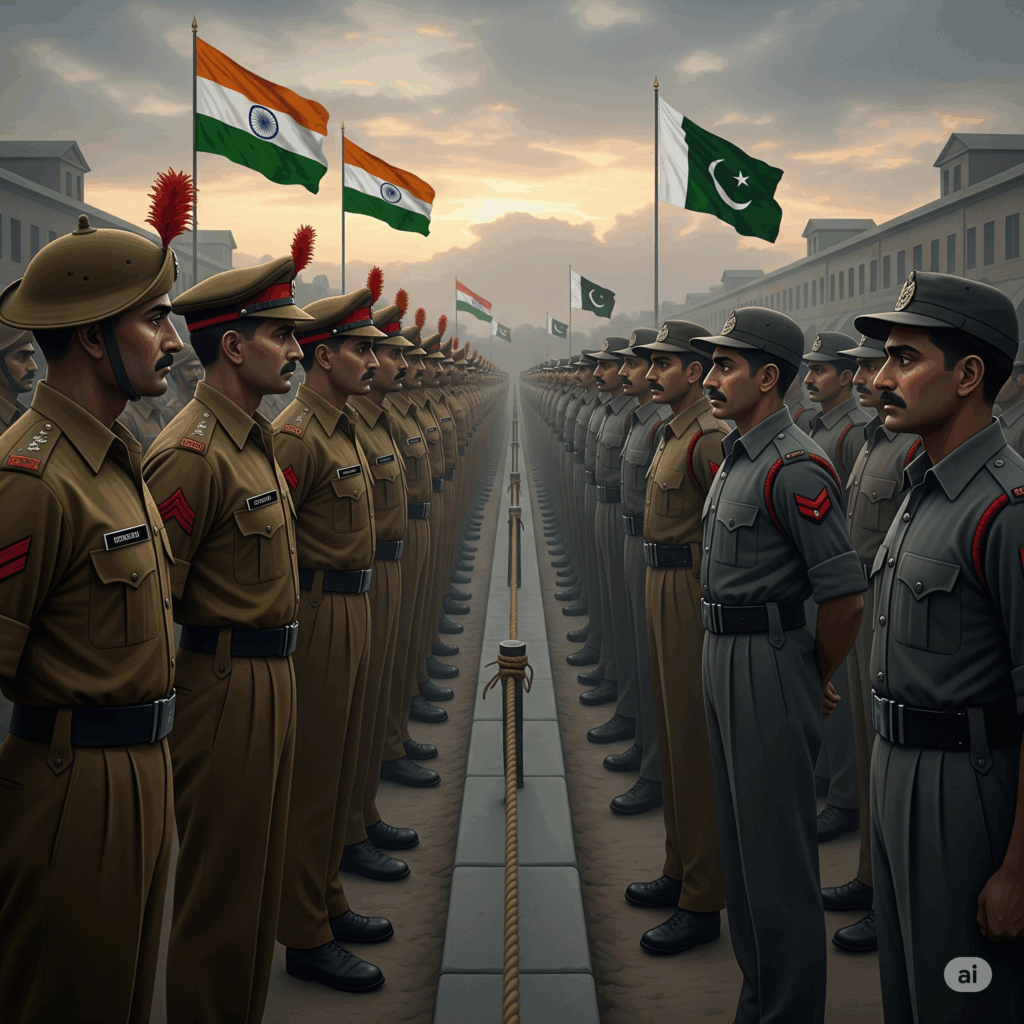
- He made the relationship with all the leaders of that time like Mr. Jawahar Lal Nehru, our father of the nation Mahatma Gandhi, Mr. Patel and Mr. Jinnah and made them agree for partition in just 4 moths also created the confusion among numerous princely states by offering them the illusion of autonomy, a complex maneuver given their varied allegiances and desires.
- Crucially, he decided to accelerate the timeline for independence by 10 months, moving the date to August 1947. This accelerated pace, while seemingly a gift of freedom, would leave precious little time for careful planning and transition.
- Mountbatten’s most impactful decision was the order to withdraw every British officer on August 15. This move, intended to ensure a clean break for Britain, simultaneously created a profound leadership void within India’s vital institutions, setting the stage for immense challenges.
- July 8, 1947: The Pen That Divided a Land
Sir Cyril Radcliffe’s arrival in India on July 8, 1947, was marked by the intense heat and a profound lack of familiarity with the land he was about to redraw. He had never seen India before. Tasked with the monumental responsibility of demarcating new borders, he worked in isolation, confined to a mansion with colonial maps, for just 37 days. In that brief span, he was to partition Punjab and Bengal, vast regions with deeply intertwined communities. he was immediately deported back to London where he confessed the shoddy job done by him under the guidance of Mountbatten. The lives of countless villages and families were, in essence, reduced to lines on a map, their existence treated as irrelevant to the task at hand.
The details of these borders were shrouded in secrecy, withheld even from Mahatma Gandhi Nehru and Jinnah, who would soon lead the newly independent nations. British troops guarded Radcliffe’s compound, emphasizing the isolated and unappealable nature of his work. The mandate was stark: “Five weeks to divide a civilization. All decisions final. No appeals.” It was a process that prioritized speed and finality over the immense human cost.
August 15, 1947: A Freedom Marked by Absence
Midnight. August 15,1947
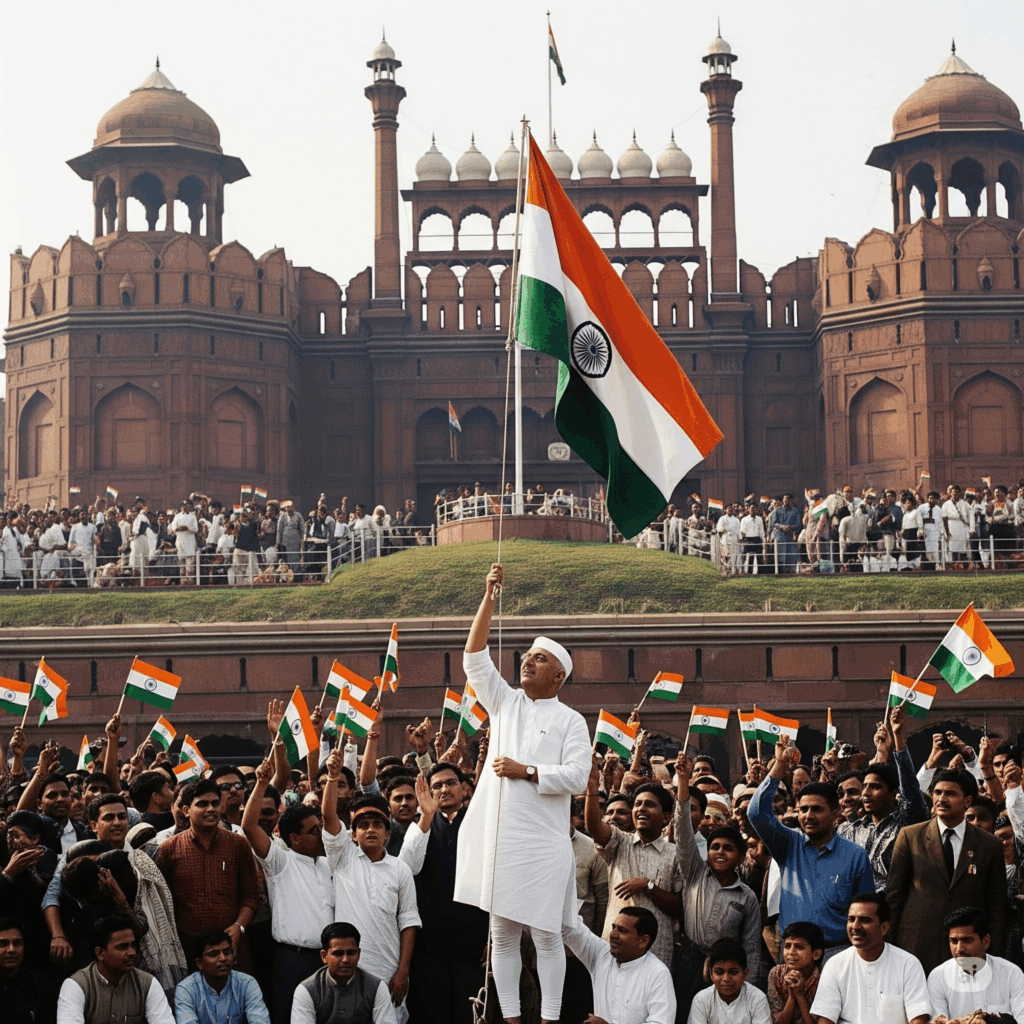
Jawaharlal Nehru’s voice, declaring India’s independence, resonated with hope and promise. As fireworks lit up the Delhi sky, symbolizing a new dawn, Mountbatten’s plan for disengagement was already in motion, creating an immediate and devastating vacuum:
- British officers vanished: Barracks that had housed them were locked, and ships carrying them sailed away, leaving Indian forces without their former command structure.
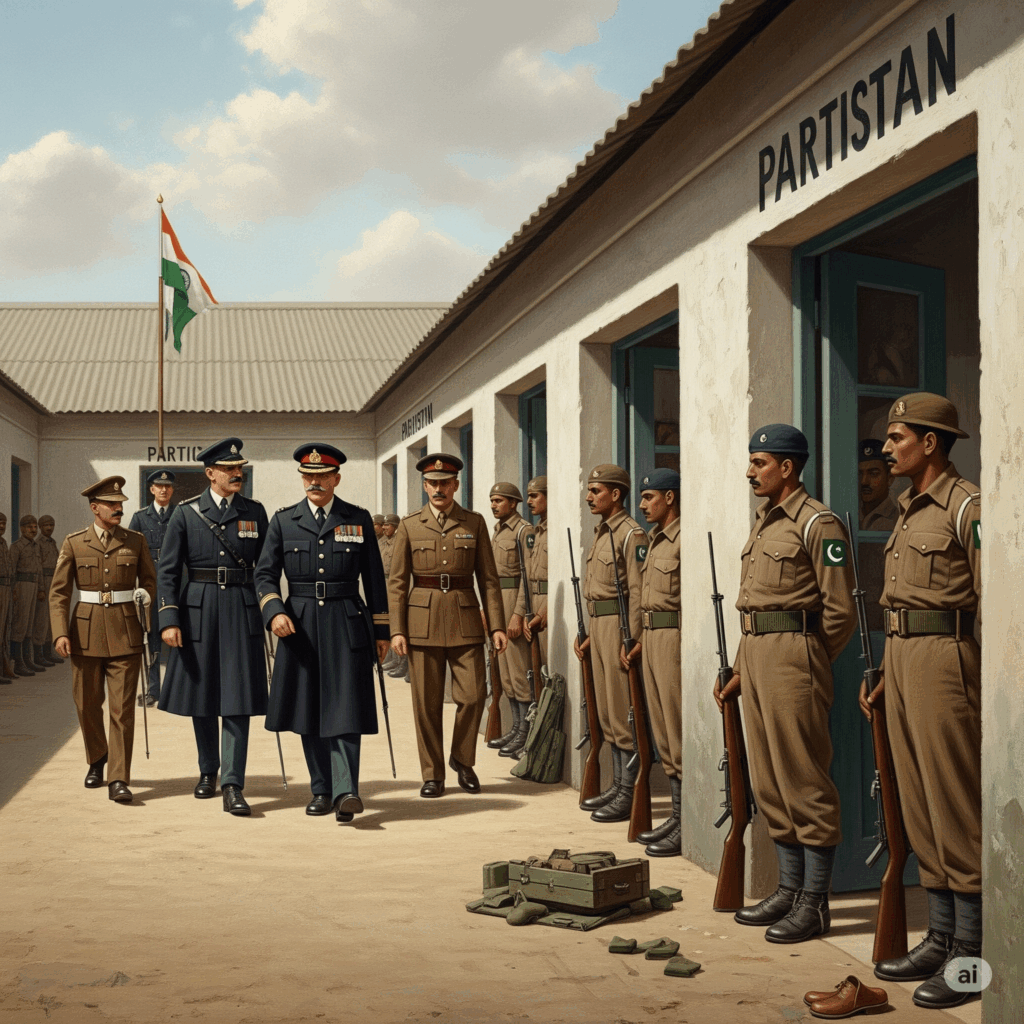
- Police stations emptied: Crucial plans for maintaining public order, especially during a period of immense tension, were not formally transferred or explained, leaving local police forces unprepared for the inevitable unrest.
- Railways paralyzed: Signal boxes were abandoned, disrupting the vital network that would be desperately needed for the safe passage of millions of displaced people.
- The immediate consequences were profound. In Punjab, a Sikh officer’s frantic radio call for guidance as “Mobs burning Gujranwala!” met only silence. In Hyderabad, the Nizam, reliant on British counsel, found himself isolated and without direction. The joy of independence was quickly overshadowed by a deepening sense of confusion and vulnerability.
- August 17, 1947: The Map’s Unfolding Tragedy
- The dawn of August 17, 1947, revealed the tangible impact of Radcliffe’s lines. A farmer near Amritsar unrolled a poster, its stark simplicity concealing a monumental tragedy: “INDIA” ←───────✂️───────→ “PAKISTAN.” His well was now on one side of the line, his wheat field on the other, and his brother’s home, just a short distance away, was engulfed in flames.
The first “blood train” left Lahore that morning, a chilling symbol of the unfolding catastrophe. By dusk, it reached Amritsar, carrying 300 corpses stacked like timber. A poignant image remained: a baby’s hand, clutching a torn Qur’an, amidst the horror.

This grim reality unfolded while, as per Mountbatten’s design, no British officer was directly caught in the violence. They observed from a distance, safely aboard ships.
The Vacuum Strategy: The Unintended Consequences
Mountbatten’s strategy of rapid withdrawal, while serving British interests, inadvertently created a catastrophic power vacuum, leading to widespread suffering in India.
| Mountbatten’s Move | India’s Nightmare |
| British officers confined | Soldiers, without clear orders, tragically found themselves in conflict with their neighbors. |
| No intelligence shared | Police, lacking vital information, struggled to identify and contain riot leaders, allowing massacres to spread unchecked. |
| Princely states abandoned | The Maharaja of Kashmir, for instance, found himself pleading with Delhi for help as tribal groups invaded, without the guidance he had grown accustomed to. |
| Railways leaderless | Refugee trains, vital for moving people to safety, derailed, leading to unspeakable horrors as mobs attacked the stranded carriages. |
As one Partition survivor from Karachi described it, with heartbreaking clarity: “We were handed a burning house and told: ‘It’s yours now. Put it out.’”
The Unquantifiable Cost
While Britain achieved an “orderly” decolonization, with division of India which will haunt us and coming generations and ensuring zero British casualties in the withdrawal, the human cost to India was immense and enduring.
| What Britain Saved | What India Lost |
| Life of the Britishers in India at that time | Approximately 2,000,000 dead |
| Zero British casualties in withdrawal | 100,000 women abducted |
| “Orderly” decolonization propaganda | Generations of trauma |
1979: The Sea’s Own Reckoning
August 27, 1979 | Irish Coast
Decades later, on August 27, 1979, Lord Mountbatten was on his boat, the Shadow V, off the Irish coast. He shared a quiet moment with his grandson, Nicholas, who was casting a fishing line. At 11:39 AM, an IRA bomb tore the vessel apart. Nicholas, just 14, was tragically lost. Mountbatten himself, grievously injured, drowned in the saltwater.
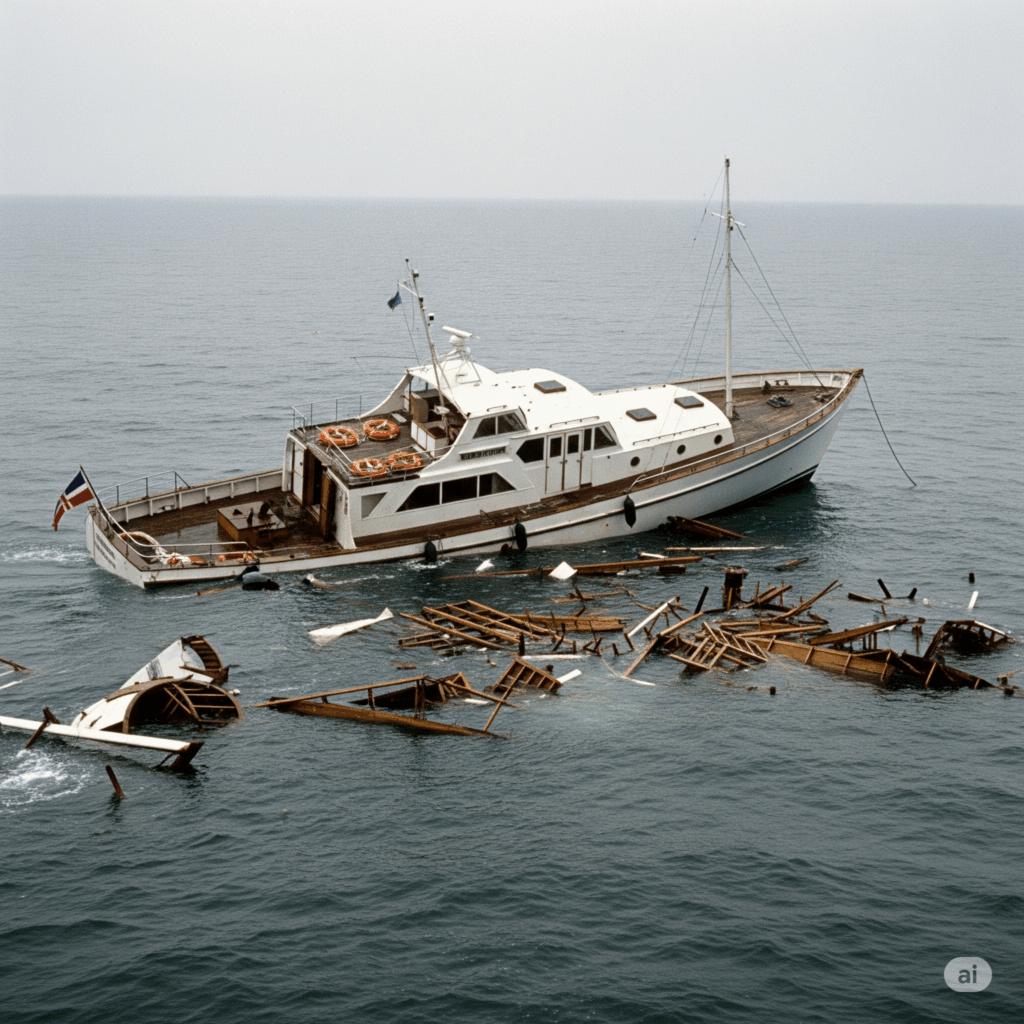
The very waters that claimed him were, in a poignant and somber way, connected to the legacy of his actions: the same waters that had carried the refugee boats of 1947, piled high with the dead; that absorbed the ashes of countless villages erased by Radcliffe’s swift pen; and that echoed the screams of children separated from their mothers. It was a final, undeniable connection to the far-reaching consequences of decisions made decades earlier.
#Partition1947 #IndianIndependence #BritishRaj #ColonialCrimes#RoyalIndianNavyMutiny #RadcliffeLine #MountbattenLegacy
